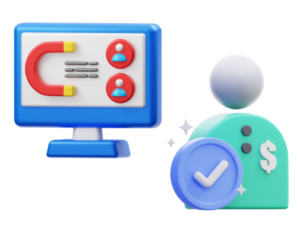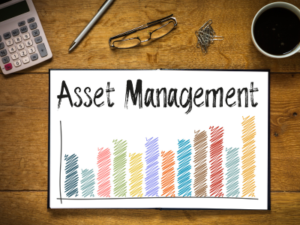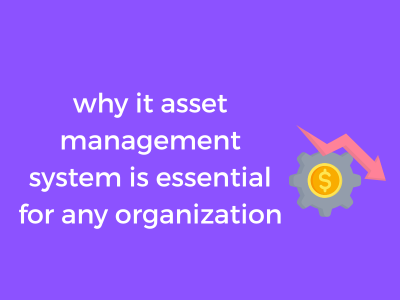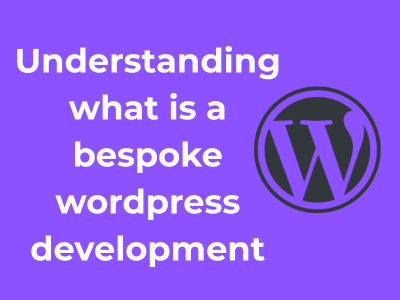Let’s take a moment to reflect on something crucial: if your business were a towering skyscraper, IT asset management would be the solid foundation and steel framework holding it all together. But what exactly does this mean in practice? Well, it’s about more than just tracking hardware or software. IT asset management forms the backbone of organizational efficiency, ensuring all those moving parts work together seamlessly.
At its heart, IT asset management is the strategic process of monitoring, maintaining, and optimizing an organization’s technological inventory. It might sound like just a behind-the-scenes activity, but trust us—it’s so much more than a support role. Every piece of hardware and software your organization uses plays a part in achieving broader business goals. Without a structured system in place to handle it all, things can spiral into chaos more quickly than you might think.
Why does this matter?
A well-oiled IT asset management system is your ticket to a world where efficiency reigns supreme. It creates order from chaos, aligning resources with needs in a way that promotes productivity rather than hindering it. Think of it as a bridge: it connects what your organization wants to achieve with the tools that make achieving it possible. Without this bridge, you’re building your skyscraper on uneven ground.
Here’s how IT asset management acts as a key player in organizational efficiency:
- Clarity: At a basic level, knowing what you have and where it’s located is indispensable. This isn’t just “nice to know” information—it is essential to ensure that every department can access the resources they need when they need them. No more searching through disorganized spreadsheets or playing guessing games!
- Streamlined Processes: An organized view of IT assets means you can streamline workflows, avoid redundancies, and equip teams to work smarter, not harder. Imagine cutting down that meeting where everyone argues about which software license is up-to-date. Let the data speak for itself!
- Informed Decision-Making: Whether you’re planning a major upgrade or rolling out a new software suite, having a clear map of where you stand helps you invest wisely. Without this structure, you’re essentially throwing spaghetti at the wall to see what sticks—not a great strategy when budgets are on the line.
How Visibility into Assets Drives Smarter Decisions
Let’s face it—decisions can be tough. Whether it’s choosing where to allocate budgets or deciding if it’s time to retire an outdated piece of tech, there’s always a fine balance to maintain in organizations. That’s where having visibility into your assets can make life so much easier. It’s not just about keeping tabs on what you own—it’s about turning raw information into informed, smarter decisions.
Understanding What You Have: The Foundation of Visibility
Imagine trying to bake a cake without knowing what’s in your pantry. Chaos, right? Similarly, businesses operate best when they know exactly what assets they have. With an IT asset management system, you get real-time transparency into your hardware, software, and other resources. This visibility allows you to answer critical questions like:
- How many laptops are in active use versus in storage?
- Which software licenses are about to expire?
- Are any servers underperforming?
This kind of insight transforms your approach from reactive guesswork to proactive planning.
A Bird’s Eye View for Better Decision-Making
Picture this: You’re tasked with proposing a tech budget for next year. Without a clear overview of your organization’s current assets, you’re essentially throwing darts in the dark. But with a robust system that gives you visibility, you can assess what’s essential, what’s underutilized, and what’s due for replacement. And that’s a game-changer.
Take these examples:
- If you know that a significant portion of your workforce is using outdated hardware, you can prioritize upgrades in the budget.
- Noticing a pattern of unused software licenses? Now you can save money and downsize those subscriptions to meet actual needs.
- Identifying underperforming network components? Time to revamp before it causes a major slowdown.
Each of these examples shows how actionable insights can supercharge your decision-making.
Data-Driven Strategies, Not Gut Feelings
Let’s bust a myth: intuition is not enough when it comes to asset management. Relying solely on gut instincts can lead to overspending, underutilization, or worse—downtime that impacts productivity. Gaining visibility through an IT asset management tool means embracing a data-driven approach. When you combine the power of hard facts with strategic thinking, it’s like having a cheat sheet to unlock the best decisions for your organization.
Enable Agility in a Rapidly Changing World
Today, technology evolves at lightning speed. What worked last year might not be relevant today. Visibility into your assets makes it easier to stay agile. For instance:
- Plan hardware refresh cycles without disrupting ongoing projects.
- Quickly pivot to new tools when old systems can’t meet demands.
- Streamline compliance audits by accessing asset inventories in minutes.
By keeping one eye on the present and one on the future, your organization can adapt seamlessly to change while maximizing available resources.
Overseeing the Lifespan and Costs of Technology Investments
Have you ever felt overwhelmed trying to figure out if your technology investments are pulling their weight? You’re not alone! Overseeing the lifespan and costs of an organization’s technology assets can be a puzzle to solve, but with a robust IT asset management system, things can get a whole lot simpler. Let’s break this down together!
Why Lifespan Matters
Think about the lifespan of your tech assets—computers, software licenses, servers, or even those trusty printers. Every piece of equipment has a beginning, middle, and end. Understanding where each of your tools stands in its lifecycle not only helps you stay ahead of repairs and updates but also lets you plan for inevitable replacements.
An effective IT asset management system gives you a bird’s-eye view of when your investments need attention. For example, you don’t want to wait for the beloved laptop of your star employee to die unexpectedly during a client presentation. Proactively managing lifespans ensures fewer surprises and greater productivity.
Tracking Costs from Start to Finish
Here’s where things really add up—new technology doesn’t just cost you at the moment of purchase; it has a long-term financial ripple effect. And as costs diversify over time (maintenance, upgrades, energy use), it’s critical to know exactly how much assets are costing you.
With a centralized system, you can pinpoint every dollar spent and determine which investments are delivering value. Wondering which tools are worth renewing when the budget shrinks? That data will already be at your fingertips.
Ways to Maximize Your Tech Budget
Let’s make tech expenses work smarter for you! Below are a few tricks IT asset management pros swear by:
- Schedule regular reviews: Check up on the performance of your tools. Replace or decommission outdated systems before they become a drag.
- Look beyond initial cost: Factor in ongoing costs like licensing, energy consumption, and future upgrades when appraising an asset.
- Use lifecycle models: Apply frameworks (such as hardware refresh cycles) to time your investments wisely.
By examining these factors, you ensure every penny contributes to organizational goals instead of vanishing into inefficient systems.
The Win-Win of Sustainability and Cost-Effectiveness
Did you know overseeing lifespans isn’t just cost-efficient? It’s also environmentally responsible. Prolonging the use of well-functioning equipment and recycling responsibly at the end of life helps reduce electronic waste—making your organization an eco-friendly hero!
Your Ally for Future Planning
Beyond the here and now, an IT asset management system becomes an invaluable tool when planning for the future. Think about this—if you know a large batch of devices will hit their expiration date in two years, you can start budgeting and strategizing now. No scrambling or nasty surprises down the line.
With greater financial predictability, your team can focus on what truly matters: innovation and growth. Doesn’t that sound less stressful?
Avoiding Redundancy and Optimizing Operational Budgets
Let’s face it—every organization, big or small, wants to save money. Nobody is eager to throw hard-earned revenue into a black hole of unnecessary spending. That’s where an IT Asset Management (ITAM) system comes into play to help organizations avoid redundancy and ensure their operational budgets are used strategically.
Why Redundancy Happens
Redundancy in IT systems often creeps in unnoticed. Think about it: have you ever wondered if your team is using two or three different software tools that basically do the same thing? Or maybe there’s equipment purchased months ago now collecting dust because someone forgot it existed. Redundancy happens when organizations lose track of their assets.
Without a clear inventory of what technology you already have, it’s easy for departments to unintentionally duplicate purchases. Perhaps Marketing buys a design tool, unaware that IT already has licenses for another perfectly capable tool that could do the job. The result? Wasted money and inefficiency.
Cutting Redundancy with ITAM
Here’s where IT Asset Management becomes your budget’s best friend. A good ITAM system provides complete transparency into your IT equipment, software licenses, and subscriptions. Managers can easily see:
- What tools and software are currently being used
- Which licenses are active, unused, or expired
- Where devices like laptops, tablets, or servers are physically located
By organizing all this information in one centralized system, businesses can stop unnecessary purchases before they happen. For example, if a team requests more user licenses for a cloud app, IT can quickly check the existing pool of licenses to allocate unused ones instead of buying additional ones.
Budget Optimization for the Win
It’s not just about cutting costs—it’s about spending smarter. ITAM systems allow you to allocate budget to areas that genuinely need it, instead of wasting it on redundant technology. With visibility into asset usage and maintenance, you can:
- Focus your budget on upgrades or equipment that supports business growth.
- Negotiate better software contracts by knowing exactly what’s being used.
- Identify underutilized resources that you can repurpose for other teams.
In short, ITAM helps businesses make data-driven decisions about their technology spend—not blind guesses.
A Practical Example
Imagine an organization that implements an ITAM platform and discovers they’re paying for 50 cloud storage licenses, even though only 30 employees actively use the service. By reallocating those unused licenses, they can save thousands of dollars annually. If your IT department has been the target of “why is tech so expensive?” questions, this kind of win not only saves money but gives IT teams a well-earned pat on the back.
The Role of Asset Tracking in Compliance and Security
Hello there! Let’s chat about something that might not sound super thrilling at first glance but is absolutely critical for the well-being of any organization — asset tracking for compliance and security. Trust me, it’s way cooler than it sounds when you realize the immense value it brings to the table. Grab a coffee, and let’s dive in!
Stay on the Right Side of Regulations
Keeping your organization compliant with industry regulations isn’t just a “nice-to-have”; it’s non-negotiable. But how do you keep an eye on all the moving parts, especially when your company is large or growing rapidly? Enter asset tracking. With a comprehensive IT asset management (ITAM) system, you can stay ahead of regulatory requirements by maintaining a real-time inventory of hardware, software licenses, and other essential IT assets.
Think of it as your compliance guardian. Have an audit coming up? No problem. A robust asset tracking system ensures you won’t be scrambling to locate that one forgotten piece of hardware or prove you haven’t exceeded your software licenses. You’ll have everything documented and ready to go, which will keep those auditors happy (and off your back).
Fortify Your Security Shields
Now, let’s talk about the security side of things because, honestly, who doesn’t get a little nervous about potential cyberattacks or data breaches? Tracking your assets isn’t just about knowing what you own — it’s about knowing where they’re located, who’s using them, and their status.
- Are your devices up-to-date on security patches?
- What’s the risk if a laptop goes missing?
- Is some outdated piece of software posing a vulnerability?
An advanced ITAM solution answers these questions for you by allowing you to manage and secure your inventory proactively. By identifying weak spots, like devices running outdated firmware or unapproved applications, you can minimize risks before they escalate into serious threats.
Battle Insider Threats Like a Pro
Insider threats — whether accidental or malicious — are real. Employees might unintentionally mishandle equipment, lose a device, or unknowingly install harmful software. An asset tracking system provides visibility into who has access to what, keeping your organization accountable and informed. It enables you to flag irregular activity immediately, ensuring no one unintentionally jeopardizes your business data or systems.
Plan for Disaster Recovery
Disasters are unpredictable — a data breach, a hurricane, or even just spilled coffee all over a server. When chaos strikes, your asset tracking system will make the recovery process smoother. Why? Because you’ll already have a clear view of your inventory, impacted resources, and immediate backups in place to get you back on your feet with minimal downtime.
Preparing for Scale: Adapting Asset Management for Growth
Let’s talk about growth—something every organization aims for, right? But here’s the thing about scaling that doesn’t always get the spotlight: without the right systems in place, growing pains can become a major headache. This is where IT asset management (ITAM) steps in to save the day. Let’s dive into how it can equip your organization to handle the challenges of scaling smoothly.
Why Scaling Forces a Rethink of IT Asset Management
As your company expands, so does the complexity of your IT assets. What worked when you had 50 laptops and a single office likely won’t cut it when you’re operating internationally or across multiple divisions. Scaling isn’t just about adding new hardware or software; it’s about making sure all your technology grows **together efficiently**.
Think about it: when new resources are added, without a robust ITAM system, you’re opening the door to chaos. Redundant purchases, abandoned software licenses, and neglected upgrades can pile up, eating into budgets and muddying your efficiency. By focusing on scalability with an adaptive ITAM system, you can avoid these pitfalls entirely.
Building an Adaptive Foundation for Growth
The key to preparing your asset management for growth lies in implementing a system that’s both flexible and intuitive. Here are some must-have features to look for:
- Cloud-based solutions: These give you the agility to manage global teams and remote work environments easily.
- Scalability by design: Choose systems that allow you to onboard new assets, employees, and IT infrastructure without disruption.
- Integrations galore: As your organization grows, you’ll likely add new systems and tools. Pick an ITAM solution that plays nice with others!
Remember, the right foundation saves you from outgrowing your asset management system. Always think long-term!
Avoiding Blind Spots During Growth
During a growth spurt, it’s easy to lose track of **who has what**, or worse, whether everyone is even using their assigned software and hardware. Without proper visibility, scaling can lead to inefficiencies such as:
- Over-purchasing hardware while existing resources go underutilized.
- Failing to identify outdated systems that could derail critical operations.
- Not standardizing tools, which makes collaboration tricky.
With ITAM, you can maintain **real-time oversight**, eliminating these blind spots and ensuring that every new asset fits seamlessly into your operations.
Setting the Stage for a Scalable Future
Scaling isn’t just about adding—it’s about **streamlining and harmonizing**. A solid ITAM strategy can act as your digital glue, ensuring that assets move as fast as your growing ambitions. This means automated tracking, better forecasting, and the ability to proactively adapt to changing demands.
It’s worth noting: investing in **scalable ITAM now** saves you a world of headaches later. From improved costing to happier team members (who’ll always have what they need, on time), a smart asset management system ensures your organization is ready for whatever’s on the horizon.
Simplifying Complex IT Networks Through Centralized Control
Let’s face it: IT networks can get messy. It’s almost like spaghetti – tangled up, difficult to navigate, and overwhelming to manage. That’s where centralized control through an IT Asset Management (ITAM) system comes to the rescue!
Why Does Centralization Matter?
Imagine juggling hundreds, or even thousands, of devices, software tools, servers, and cloud services in your organization, all scattered across departments and locations. Without one unified way to manage this chaos, you’d likely find yourself drowning in inefficiencies, downtime, and vulnerable security gaps.
This is why centralization truly shines. By merging all IT asset information into a single, accessible hub, an ITAM system makes your life a whole lot easier. One portal, one dashboard, one clear picture of your organization’s IT ecosystem. Doesn’t that sound nice?
Think of It Like a Control Tower
Picture an air traffic controller managing flights. They need to know where every plane is, what its status is, and what’s coming next. Now, think of your organization’s IT network as the “airspace,” with devices, tools, and servers acting like the planes. An ITAM system works as your control tower: it monitors, tracks, and coordinates the entire “fleet,” ensuring everything is where it should be.
The Secret Ingredients to Simplification
- Automated Updates: No more scrambling to manually track assets or hardware refresh cycles. Modern ITAM systems automate these processes, saving you from headaches.
- Improved Collaboration: With a centralized system, teams across departments gain better access to relevant data and can work together seamlessly—fewer silos, more collaboration.
- Streamlined Troubleshooting: A centralized view helps IT staff quickly pinpoint issues, whether it’s diagnosing hardware failures or addressing software compliance concerns.
- Real-Time Information: Forget outdated spreadsheets. The beauty of ITAM systems is that they provide live updates, giving you the most accurate insights in real-time.
Big Benefits With Centralized IT Control
What do you gain when you simplify your IT operations this way? Here are just a few of the standout benefits:
- Clarity: It’s so much easier to make informed decisions when you can see your IT assets clearly, neatly organized in one place.
- Efficiency: IT personnel spend less time tracking down rogue devices or conducting audits, and more time actually improving systems.
- Cost Savings: A centralized system often reveals underused assets or redundancy, saving your organization some serious cash.











